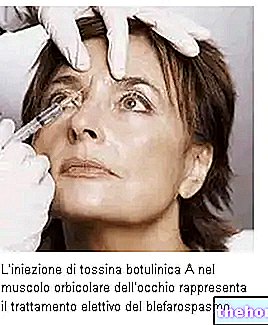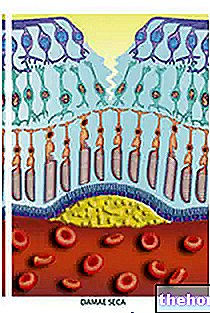Generality
Hemeralopia - also known as night blindness - is a disorder characterized by difficulty in seeing at night and in low light or twilight conditions.

Basically, we can distinguish two different types of hemeralopia:
- The hereditary and congenital form, also known as congenital hemeralopia or congenital stationary night blindness;
- The acquired form, an example of this particular form of hemeralopia is constituted by the hemeralopia in pregnancy.
Causes
The causes of hemeralopia can be of different origin and nature.
The cause of hereditary and congenital hemeralopia lies in an alteration in the structure and function of rods (the photosensitive cells, otherwise known as photoreceptors, found in the retina and responsible for vision in low light conditions).
Acquired hemeralopia, on the other hand, in most cases is caused by a dietary deficiency of vitamin A (or retinol, if you prefer), a fundamental molecule in the synthesis of rhodopsin (glycoprotein found on the rod membrane and which covers a role of primary importance in the molecular mechanism of vision). Vitamin A deficiency, in turn, can be caused by an insufficient intake with the diet, or by a lack or a reduced absorption from the intestine.
In other cases, however, hemeralopia can be the symptom of other diseases, such as cataracts, age-related macular degeneration, glaucoma, retinitis pigmentosa, optic neuritis, diabetic retinopathy, retinoblastoma, hepatopathies, thyrotoxicosis, myopia and Refsum's disease.
Symptoms
As stated above, hemeralopia consists in the difficulty of vision in low light conditions and, sometimes, it can itself constitute the symptom of an underlying pathology.
However, in association with this disorder - in addition to the difficulty of retinal adaptation to external brightness - it is not uncommon for other symptoms to occur, such as dry eyes and headache.
Treatment
The treatment of hemeralopia can be different depending on the cause that caused it.
Therefore, if the hemeralopia is caused by a lack of vitamin A, it is necessary to intervene with a therapy aimed at filling this deficit in the patient.
If, on the other hand, hemeralopia is caused by basic pathologies, the treatment that the doctor decides to undertake will be aimed at treating the primary cause that led to the onset of night blindness.
As for the congenital form of hemeralopia, however, unfortunately at the moment there is no cure capable of resolving this pathology.





.jpg)






















